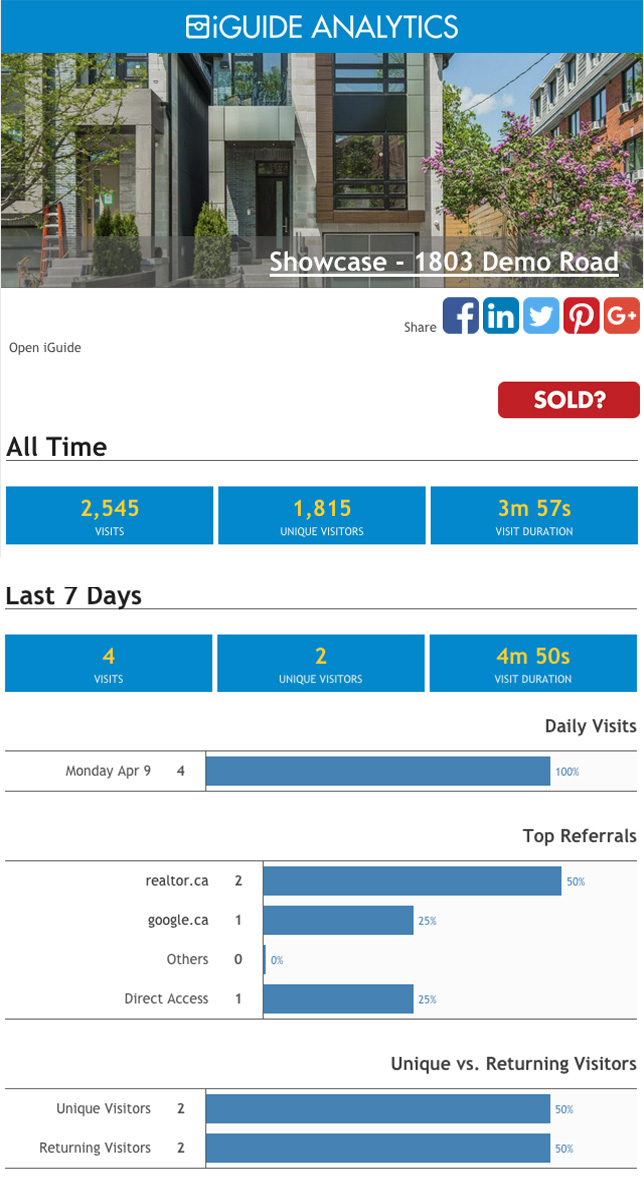You are viewing our site as an Agent, Switch Your View:
Agent | Broker Reset Filters to Default Back to ListKnow Your Numbers to Get Analytics Working for You!
March 27 2019
 At a recent real estate event, a question was posed to the audience. What do you get paid for? The answers were varied. Negotiation, marketing skills, and value were words commonly mentioned. Then someone said "my experience" and the speaker's eyes lit up.
At a recent real estate event, a question was posed to the audience. What do you get paid for? The answers were varied. Negotiation, marketing skills, and value were words commonly mentioned. Then someone said "my experience" and the speaker's eyes lit up.
"What does experience mean?" she asked. The room quieted for a moment as the attendees contemplated the answer.
"Experience," she said, "means that you are bringing to the table all of the things that your customer doesn't have without you."
Your database, network, and real estate marketing knowledge are what set you apart. But how do you package that experience in a way that makes sense to your customer? How do you prove the value of those things? This is where analytics and numbers demonstrate value to your clients. It's very difficult to measure warm and fuzzy, but it's easy to measure real data. It's well and good to tell your customers that you are marketing their home, but how do you show them the results? What stats should you be tracking on your listings, and what do those numbers mean? The best systems will always supply analytics that tell you how your listings are performing and lay it out clearly so you can take action. Let's take a closer look.
Where do your potential buyers come from? Watch your traffic!
Traffic analytics can be super helpful as you pinpoint what strategies are working, and which aren't. Whether you are sharing your listing photography and videos to Facebook, Instagram, or other social media sites, it's important to track where your views and clicks are coming from. Look for the category "referral sources." This will tell you which sites are driving traffic (eyeballs and potential buyers) to your listings, and which sites aren't. Examine whether you need to put more energy and effort into certain sites over others. Remember that your audience is unique, so what works for everyone else may not work the same for you. Don't be afraid to adjust as you see the results.

How long do they stay?
If you are creating videos, 3D virtual tours, or 360° virtual tours, one thing you will definitely want to track is the amount of time visitors spend on your site or content. If you are seeing a high number of visitors, but a short "visit duration," this may indicate a couple of issues. First, take a look at where visitors are dropping away. Is there an issue with staging or property condition that can be addressed with your clients? It might be helpful to get a fresh pair of eyes on your virtual tours or videos, and ask for candid feedback.
What do they click on?
The key to good marketing is to provide information that your customers need, but then also explain why it's important, and what steps to take next. In online and email marketing, providing links to more information can be a great way to do this. It also lets you start tracking what type of information your customers are interested in. For example, if you include a link to download floor plans and you see a high frequency of click-throughs to your floor plans, it's a good indication your customers want to see more of this type of property information.
Who comes back?
As important as it is to track where your customers come from, how long they stay on your site, and what they are interested in, there is one more stat that is equally important. That is who comes back? Most sites will define this stat as "unique vs. returning visitors." Unique visitors tells you how many individual people looked at your content. Returning visitors tells you who came back more than once. These are the visitors you want to see – people who are interested enough to check out your listings multiple times. Keep an eye on those numbers, as that is where the real interest lies.

As you research which tools and website to use in your marketing efforts, ensure that you have access to stats and analytics. When considering which resources are best for you, be sure you ask whether this information is readily available for you and for your clients.
The next time you sit with a customer to talk about your experience, keep these analytics in mind. Your experience includes the ability to attract eyeballs to your marketing, and stats help you explain that value. If you can track what your customers want, where they go to find it, and capitalize on that, you will be far more successful in marketing your seller's home.
Brought to you by Sara Penny, Communications and Marketing Manager at Planitar Inc. the makers of iGUIDE, and the iGUIDE® Team. Follow the link for more information on how iGUIDE 3D Virtual Tours can help you save time and connect more with your clients.









